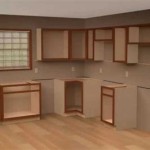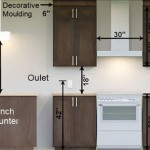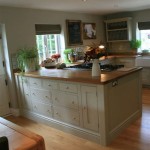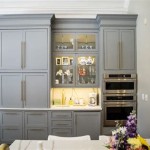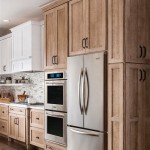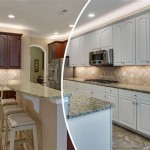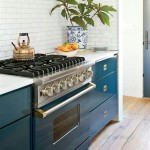DIY Paint and Glaze Kitchen Cabinets: A Complete Guide
Painting and glazing kitchen cabinets is a cost-effective way to transform the look of your kitchen without the expense of replacing them. Whether you're updating dated cabinets or simply want a fresh change, this guide will provide you with the essential steps and tips to achieve a professional-looking finish.
Preparing Your Cabinets
Before you start painting, it's crucial to prepare your cabinets properly. This involves:
- Cleaning: Remove all dirt, grease, and old finishes using a degreaser or cleaner.
- Sanding: Scuff the surface of the cabinets with fine-grit sandpaper to create a rough texture for the paint to adhere to.
- Priming: Apply a coat of primer to seal the cabinets and prevent bleed-through from the old finish.
Choosing Paint and Glaze
The paint and glaze you choose will significantly impact the final result. Consider the following:
- Paint: Select a high-quality cabinet paint in your desired color. Look for paints labeled "cabinet paint" for better adhesion and durability.
- Glaze: A glaze is applied over the paint to add depth and character to the finish. Choose a glaze in a complementary shade to your paint color.
Painting the Cabinets
To paint the cabinets, follow these steps:
- Thin the Paint: For a smoother finish, thin the paint slightly with water or a paint thinner.
- Apply Thin Coats: Apply two to three thin coats of paint, allowing each coat to dry completely before applying the next.
- Sand Between Coats: After the first coat, sand lightly with fine-grit sandpaper to remove any imperfections.
Applying the Glaze
Glazing is an optional step that enhances the finished appearance. Here's how to apply it:
- Thin the Glaze: Dilute the glaze with water to a milky consistency.
- Apply the Glaze: Use a brush or rag to apply the glaze unevenly, allowing some areas to be darker than others.
- Wipe Off Excess: Wipe off the glaze immediately with a clean cloth or sponge to create a textured effect.
Finishing the Cabinets
To protect your newly painted and glazed cabinets:
- Polyurethane: Apply a coat of clear polyurethane over the glaze to seal and protect the finish.
- Sand the Polyurethane: After the polyurethane has dried, sand it lightly to remove any imperfections.
- Refinish the Hardware: Update the hardware on the cabinets to match the new finish.
DIY painting and glazing kitchen cabinets can be a rewarding project that transforms the look of your kitchen on a budget. By following these steps carefully, you can achieve a professional-quality finish that will last for years to come.

How To Glaze Kitchen Cabinets

How To Glaze Kitchen Cabinets Diyer S Guide Bob Vila

Rescuing And Reviving A Glazed Distressed Kitchen Bella Tucker

How To Glaze Cabinets At Home With The Barkers

How To Glaze Kitchen Cabinets Diy Network

How To Glaze Cabinets At Home With The Barkers

Porchswings N Honeysuckle Paint And Glaze Cabinet Tutorial Kitchen Cabinets Makeover Renovation Glazed

Cabinet Refinish Diy Simple Paint And Antique Glaze Kitchen Cabinets

How To Glaze Cabinets At Home With The Barkers

How To Glaze Kitchen Cabinets Diyer S Guide Bob Vila
Related Posts


